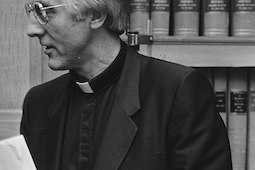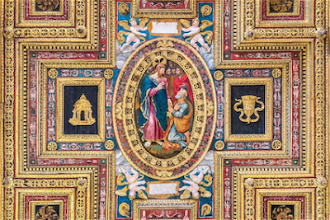In Flanders Fields

The sun shone on us on our Battlefield tour in Easter week, and tranquil fields surrounded us. Even so, on the Ypres Salient, the water table is very close to the surface and our walks took us along some waterlogged and muddy paths. You can understand why the enduring images from World War One is of cold and wet and mud, a landscape pock-marked with shell craters, trenches and paths with slimy duckboards, men dying from drowning who had not even made it to the front, as well as thousands dying from artillery fire.
April 22nd marks 100 years since the start of the Second Battle of Ypres. In the four years of the war, there were several major offensives in the Salient, most of which resulted in many more casualties, with very little ground gained.
If there were Doom paintings in the churches of the villages and towns, they and most of the buildings did not survive the constant bombardment; at the time, the horrors of hell were all around, way beyond the worst the mediaeval painters could imagine.
Of the 150,000 allied servicemen who died in the four-year long fighting in this extraordinarily small area, we focussed on several individuals - their lives and, in most cases, their deaths. Many were the tales of unbelievable bravery; most attributed and dedicated their decorations for courage to their comrades.
We found the headstones of double VC winner, Noel Chavasse, an inspirational medical officer, non-combatant, who saved the lives of many; the Catholic chaplain Fr Willie Doyle MC (a Jesuit), who ministered to the wounded and dying, and whose insistence that he must be present with his flock at the front inspired the "powers that be" accordingly to allow other selfless army padres to go forward, 120 of whom were decorated for bravery.
Members of our group found the headstones of great-uncles or cousins, and planted a cross at their graves. I spotted nine headstones of men from the same company who died on the same day; another sight I was tremendously moved by was the headstone of Private E H Dixon, age 20, whose inscription reads
"ONLY A STRETCHER BEARER,
HE GAVE HIS LIFE MEN'S LIVES TO SAVE"
One of our number had investigated the story of Thomas Hawkins (he joined up aged 16 and this might have been an assumed name) who was shot at dawn for desertion. In his case, he had deserted four times before, and each previous time his death sentence had been commuted to several years of penal servitude. There were around 3,500 courts martial attracting the death penalty for various offences, less than 10% of which were carried out. We planted a white peace poppy by Thomas Hawkins' headstone, and, as we had done with all the other graves we marked, recited those famous words "They shall not grow old, as we that are left grow old.... We will remember them".
The Commonwealth War Graves Commission looks after hundreds of cemeteries across the world; in the Ypres Salient alone there are 175 cemeteries, given as a free gift by the Belgian people "for the perpetual resting place of those of the Allied armies who fell in the war of 1914-1918 and are honoured here".
The uniformity of the headstones spells out the equality of death; all ranks are honoured here. All headstones include a cross, unless a Jewish symbol was appropriate; some have words, most do not. A huge number have the words "A soldier of the Great War", and "Known unto God" below the cross. When hostilities ceased and the huge task of clearing the battlefields began, thousands of the dead could not be found or identified; the decision was taken to list the names on large Memorials, thus the Menin Gate and the other Ypres Salient Memorials state (in Kipling's words)
HERE ARE RECORDED NAMES OF OFFICERS AND MEN WHO FELL IN YPRES SALIENT
BUT TO WHOM THE FORTUNE OF WAR DENIED THE KNOWN AND HONOURED BURIAL GIVEN TO THEIR COMRADES IN DEATH
There are 54,000 names engraved on the Menin Gate alone.
Some of these cemeteries include German graves; all are afforded equal dignity and respect. The gardens - for that is what they are - are beautifully and sensitively cared for. When we were visiting particular graves, the gardeners postponed mowing that part of the cemetery. The Commission is the foremost horticultural organisation in the world, as the decision was taken for the planting to reflect where the men had come from, even in the most hostile landscape. Gertrude Jekyll was engaged to design the gardens and the foremost architects designed the monuments, including the Sword of Sacrifice adorning each cemetery. Lutyens noticed the great numbers of mourners visiting the graves of their loved ones and included brick shelters where possible to protect them from the almost incessant rain.
Our group was from the Parish of Holy Trinity and St Mary's in Guildford, but included three Catholics (as honorary parishioners). Supplementing the skills of the excellent guide, Mark Banning, the four former service personnel shared their deep knowledge and understanding of campaigns, strategy and tactics of the battles. Jo, my sister, a former nurse and a Nightingale, shared research and information about medical matters, evacuation and care of the wounded, what resources were available and what were not! We learnt much about chaplains, their roles and contributions, including a visit to Talbot House (the forerunner of TocH).
As a church group, we were allowed to hold a service in the Upper Room at Talbot House, which concluded with all of us exchanging a sign of peace.
For me, one of the most significant sights was in the big German cemetery at Langemarck, which is stark with dark granite slabs and stones and multiple graves. There, at the entrance were a few wreaths, and among them, a wreath laid by a school group on their Battlefield tour. In German, it stated "In proud memory of the fallen soldiers of World War One - from the Teesside School and 6th Form Centre We will remember them"
So young people are now coming here to learn, too, from this landscape of memories and memorials. It gives hope that "Never again" will become their mantra and we will not see such waste, such misery, ever again.
For nearly 100 years, the Festival of Nine Lessons and Carols has taken place on Christmas Eve in the Chapel of Kings College, Cambridge. It was inaugurated by former army chaplain, Eric Milner-White, for December 1918 on his appointment as Dean, straight from his army service. The opening bidding prayer will now have much greater relevance for me as, undoubtedly inspired by his experience, it closes thus:
"Lastly let us remember before God all those who rejoice with us, but upon another shore and in a greater light, that multitude which no man can number, whose hope was in the Word made flesh, and with whom, in this Lord Jesus, we for evermore are one."


















